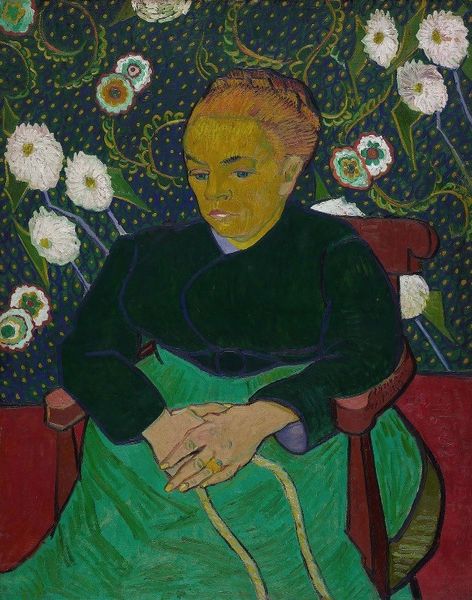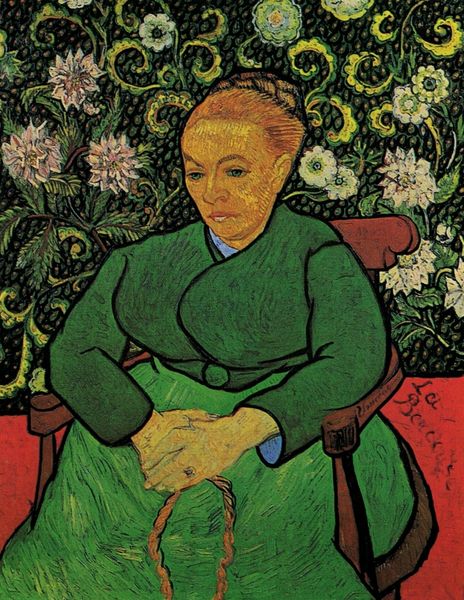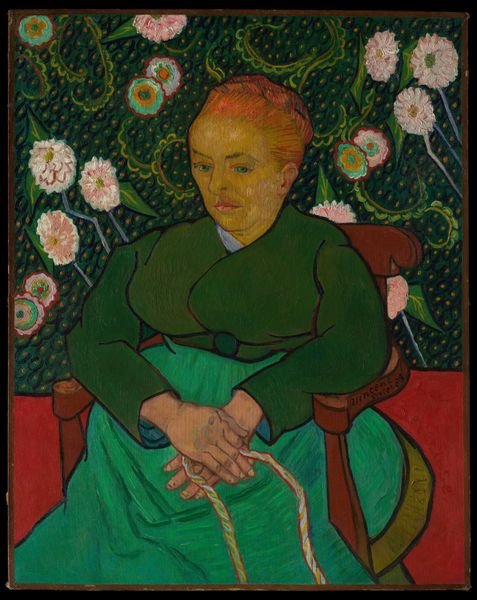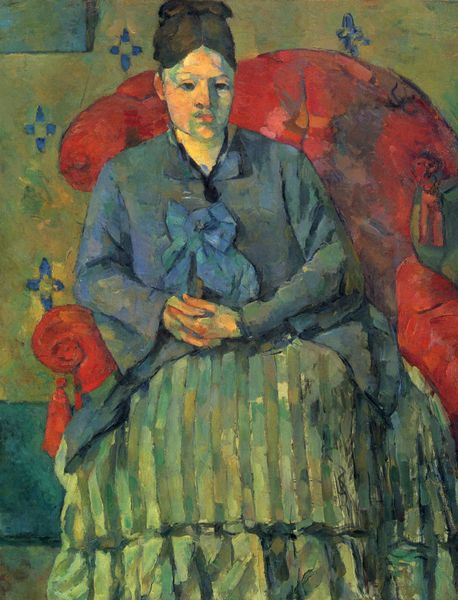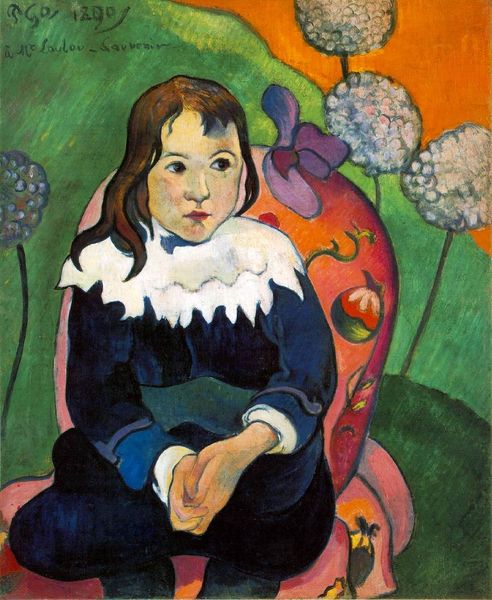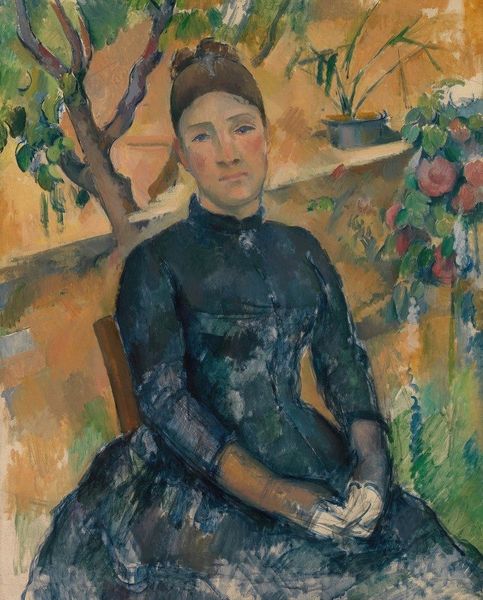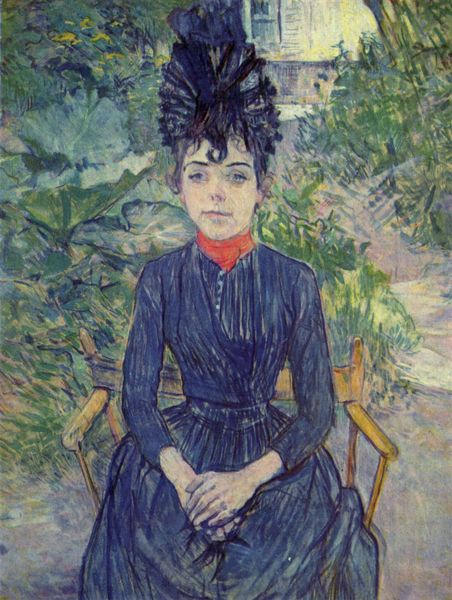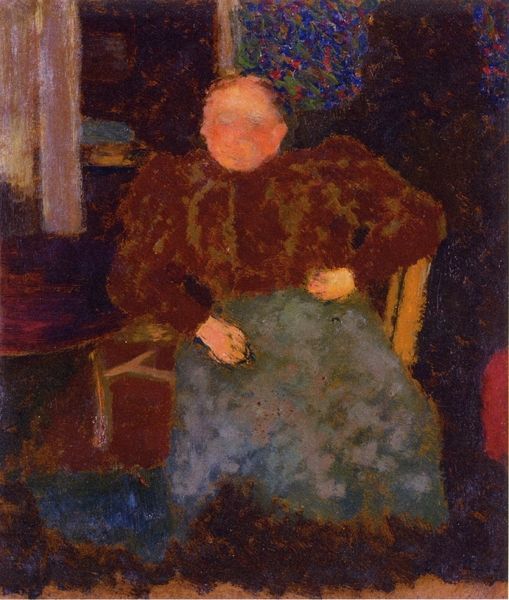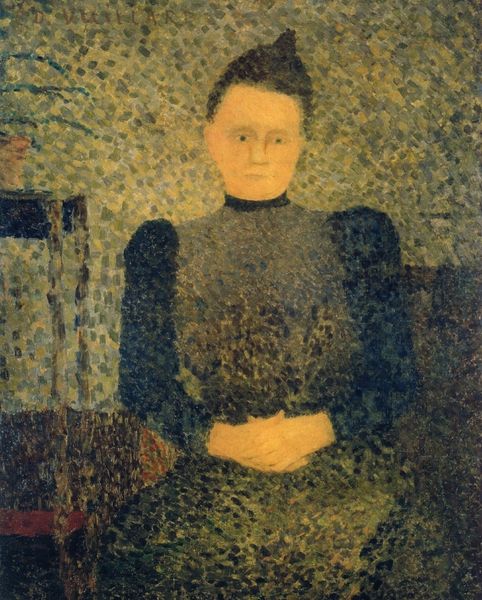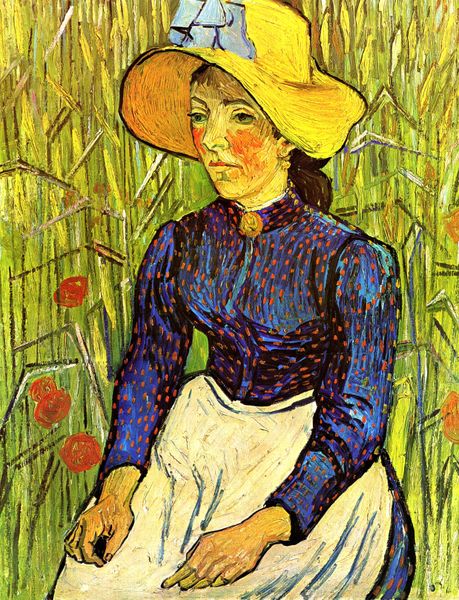
Madame Roulin Rocking the Cradle (A Lullaby) 1889
0:00
0:00
vincentvangogh
Museum of Fine Arts (MFA), Boston, MA, US
painting, oil-paint
#
portrait
#
painting
#
impressionism
#
oil-paint
#
naive art
#
post-impressionism
#
realism
Copyright: Public domain
Curator: Van Gogh's 1889 oil on canvas, "Madame Roulin Rocking the Cradle (A Lullaby)," offers us an intimate glimpse into domestic life, doesn't it? What strikes you first about it? Editor: The colors. That insistent green and yellow shouts at me. It’s not calming, not what you’d expect for a lullaby. It’s almost confrontational, signaling societal and class-based expectations of motherhood. Curator: Exactly! Notice how he applied the paint thickly, building layers upon layers, especially in the floral wallpaper. It speaks to Van Gogh's exploration of materiality and process – a real departure from traditional, academic painting. How does this heavy application shape your experience of the work? Editor: The materiality feels deliberately destabilizing. Is he questioning ideal motherhood by making it seem… constructed, labored? I think he knew the Roulin family through their labor as postal workers, and I feel that sense of labor very strongly here. Curator: That's fascinating. This specific Madame Roulin – Augustine – posed for several paintings for Van Gogh, and it’s worthwhile to consider his use of color and technique as a representation of *her* work. Her very hands, resting so deliberately. Editor: Those hands are clasped tightly; I see worry etched into her expression, a weight reflecting gendered expectations. A wife, a mother -- this might reference both social conditions, and even political ideas around the domestic sphere. Curator: It's true – Van Gogh himself wrote about the symbolism of color in this particular painting. The intense greens and reds, he argued, were meant to evoke a sense of comfort. Do you see that manifested? Editor: Perhaps he aimed for that effect, but, again, that almost manic intensity prevents that comfort for me. It's too raw. But that, I think, makes this powerful. It forces us to acknowledge that lullabies aren’t always soft. Curator: It also shows how art is never quite under the artist's full control—that material constraints and the viewing context all add nuance to an image, like this one residing in the Museum of Fine Arts in Boston. What is your final thought? Editor: I appreciate how this painting disrupts the idealization of motherhood. Van Gogh gives space to complexity, inviting discussion around care, expectation, and social forces shaping personal narratives.
Comments
No comments
Be the first to comment and join the conversation on the ultimate creative platform.


